 |
| A real life soldier! Musketeer Sean of a Jacobite regiment in Ireland circa 1689. Copyright B Hilton. |
Figure gaming usually falls into some broad categories in terms of scale. Firstly there is the model scale and secondly, the model to man ratio.
Typically 40mm, 28/25mm, 20mm, 15mm, 10mm, 6mm are the most common categories for the former. Of course there are several intermediate scales and some excessively large and small ones however, we are talking here neither of using hair rollers to represent the Imperial Guard nor of Action Man hiding in the begonias of your back yard to ambush Combat Johnnie. Let's stay with the more common and thus majority scales.
| Re-enactors in a single rank with modest space between each. Copyright B.Hilton. |
The second scale refers to how many models represent how many men and horses. This spectrum covers at one end: one model is one man and at the other end: where one model is perhaps one hundred men.
Chopping out the Glitterati style games often featured in hobby magazines and focusing on the fat middle of the curve, most gamers will use 40mm and 28mm models for 1:1 model to man ratio skirmish gaming or, up to brigade level evening games involving between 1:10 and 1:40 model to man ratio type units.Typically in this latter situation 12-24 infantry models make a battalion and 4-9 cavalry models a squadron or regiment depending on the rule system.
As a predominantly 28mm gamer I am limiting my focus to this scale but the points made here apply to a greater or lesser extent in every scale mentioned so far.
Best to start by calibrating on the core sub division of a battalion, the company:
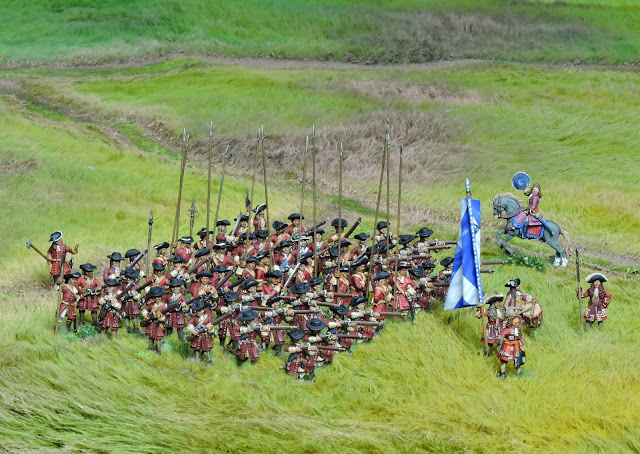 |
| Photo 1 |
Photo 1 shows our company with one model representing one man or, for the purposes of this piece call it real life (1:1). The men are six deep. 48 musketeers, 12 pikemen, 6 super numaries in shot - total 66. Not untypical for a company in the period 1680-1697. Unlikely to be used in wargaming for reasons of cost, painting time, space and rule availability.
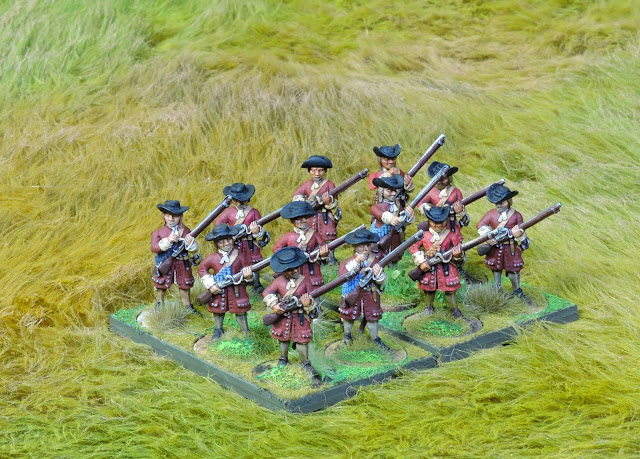 |
| Photo 2. |
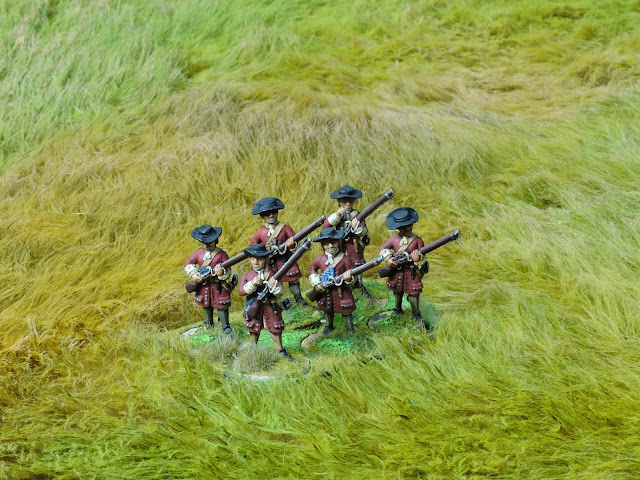 |
| Photo 3 |
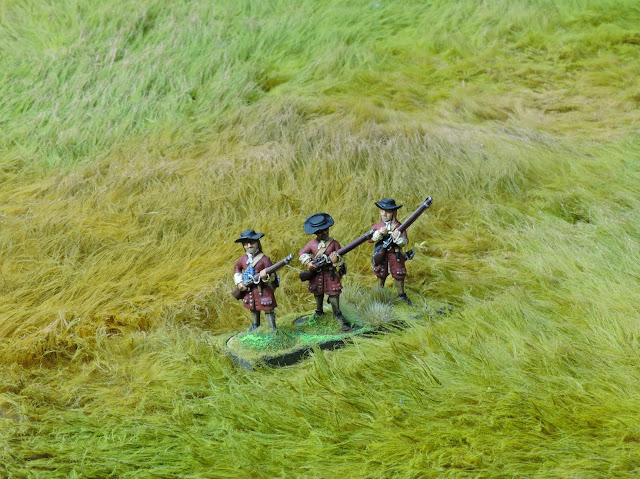 |
| Photo 4 |
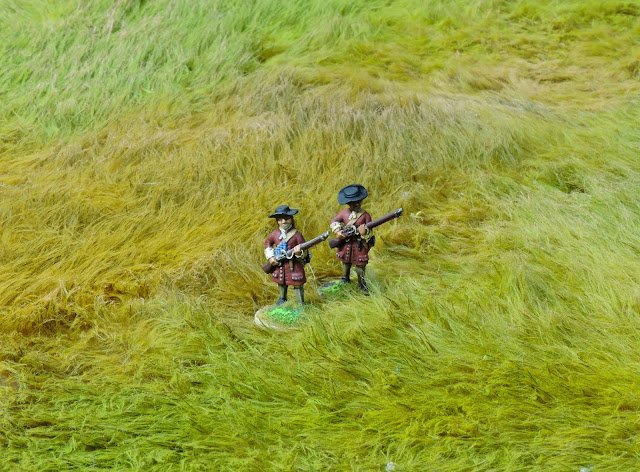 |
| Photo 5 |
Photo 5 shows the company of 66 men in the nearest approximation of a BLB battalion. It is represented by two models in a ratio of roughly 1:35. Here it is 20% of the original frontage and 16.7% of its original depth. When the full battalion is deployed in two ranks of models the ratios again come under considerable pressure. For purposes of practical representation of larger battles, many rules systems utilize a model to man ratio in the range 1:25 to 1:40. The main reasons are invariably cost, space and gaming/painting time. This is absolutely fine IF, adequate provision is made within the rules mechanics for the problematic real life issues which visually disappear on a relatively flat table top: Ground undulation, line of sight, background noise level, visibility, time, actual deployment space etc.
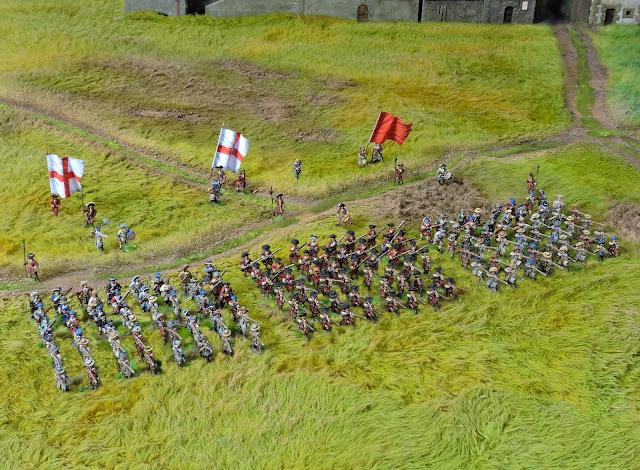 |
| Photo 6 |
Bear in mind that all of the calculations of depth so far have been based around the six deep line. When the three deep line is introduced and then the British move in Napoleonic times to the two deep line, the ratios of width to depth are blown into space. Possibly the most ridiculous formations used in tabletop wargaming are Napoleonic era British battalions in two ranks of 8-16 men each on a frontage between 120 and 240mm with a depth of 40 - 70mm. the width to depth ratio is between 3:1 and 4:1 when it should be nearer 100:1.
Photo 6 takes us back to 1:1 - three 48 man companies of musketeers. A battalion would have been the same depth but over four times as wide or, seventeen times as wide as it was deep.
 |
| Photo 7 |
Photo 7 shows a single company in three deep line. In this formation the battalion would have been more than thirty times wider than it was deep.
With 28mm models or larger, it is not possible to achieve the proper width-depth ratio simply because of the physical mass of each casting. This necessitates rule writers seriously considering the implications of allowable formations, deployment, movement rates, formation changes, turns, wheeling and all the other tricks beloved of gamers. It is very uncommon to read accounts of colonels organizing and reorganizing their battalions and squadrons in different permutations and orientations in historical accounts, why?
 |
| The Lord Grand Prior's Regiment at 1:35 based for BLB. Painted by DOB. |
It was near impossible because of the distances, terrain lie, noise and the fact the battlefields are bloody dangerous places. Get your troops in the right formation and the right place and leave them there! That's more like real history than the Dancing on Ice ballets often seen on the table top.
